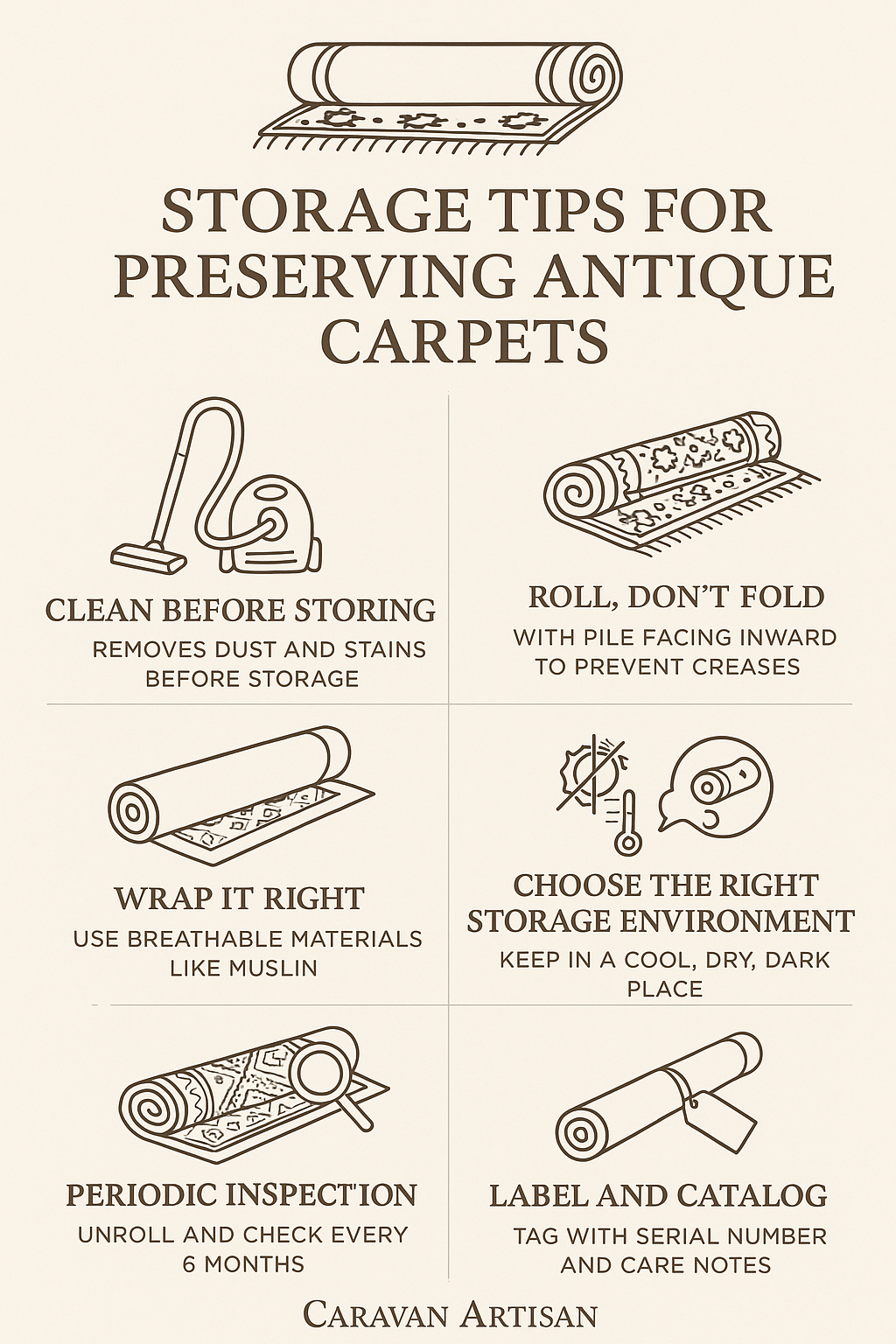
Storage Tips for Preserving Antique Carpets
Being handmade antique carpets merely decorate homes, they are also worthy investments and cultural representations. If you are storing a rug for seasonal days or preserving an heirloom, then storage must take place properly to retain its quality, color, and structure. At Caravan Artisan, we believe in preserving the beauty and heritage of every handmade carpet; here are a few expert-approved storage tips that can be used to keep your antique rugs in good condition through generations.
1. Clean Before Storage
Before storing the carpet, clean it thoroughly. Dust, dirt, or food particles may attract insects or cause permanent staining with time.
Vacuum lightly on both sides to remove dust.
In case of spills or stains, spot-clean them using mild detergent and cold water.
Deep cleaning is strongly encouraged, preferably by professional cleaners, especially for valuable or delicate carpets.
Pro Tip: Never store the carpet until it is thoroughly dry; otherwise, it may produce molds or mildew.
2. Roll It, Do Not Fold
Folding would have left permanent creases on the antique carpet, or, in some cases, might have damaged the weave. Instead, it should always be rolled up while placed in storage.
Roll the carpet with the pile side inward so the fibers are protected.
Protective inner core from a cardboard tube or a PVC pipe would do well.
Tie the roll with cotton or muslin strips; never tape directly on the carpet.
3. Wrong Wrapping
Protect your rolled carpet using a breathable wrap such as acid-free paper, cotton sheets, or muslin.
Avoid the use of plastic wrapping or garbage bags, as the moisture they may trap can cause mildew.
For long-term storage, put a small quantity of cedar chips or cloth-wrapped mothballs close by to keep insect away, but under no circumstances should they be placed on the carpet.
4. Storage Environment
The environment has much to do with the preservation of antique rugs.
A climate-controlled environment that is clean and dry is ideal.
Damp basements or attics, or any area with exposure to sunlight, are bad choices.
Maintain stable temperature and humidity; shrinkage, expansion, or fading can occur otherwise.
Store the carpet off the ground, either on a pallet or on racks, to keep it safe in the event of flooding or insect infestation.
5. Periodic Inspection
Antique carpets need to be given attention even when in storage.
Every 6 months, unroll and inspect the carpet for signs of moisture, insect activity, or color fading.
Keep it airing for a little while before rolling it back up for storage.
Carefully rotate the carpet to one side slightly while re-rolling so the same fibers won't be put under stress over time.
6. Labeling and Cataloguing
If multiple carpets are going into storage, consider tagging each roll with some or all of the following information:
Serial number
Size and origin
Last cleaning date
Instructions for care if any
This will not only help you to stay organized but also help preserve the provenance of your carpet and, as an extension, its resale value.
When in Doubt, Ask a Professional
Storing handmade carpets isn’t just about rolling them up and setting them away—it is maintenance work that protects history, culture, and the craft. If you ever feel like there might be another way to best treat your rug, never hesitate to consult our Caravan Artisan team.
We are always ready to ensure your investment's care, either by cleaning, appraisal, or preservation. Do you have a question about your antique rug? Call us today and put our know-how to work.
